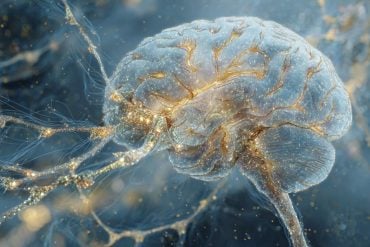Summary: Scientists have, for the first time, identified the brain signals linked to extinguishing fear memories in humans. Using implanted electrodes and advanced Representational Similarity Analysis, they showed that theta activity in the amygdala increases when previously unpleasant cues are re-learned as safe.
These extinction memories were found to be highly context-specific, explaining why fear often returns once therapy ends. The findings open new avenues for therapies targeting fear-related disorders like PTSD and anxiety.
Key Facts:
- Amygdala Activity: Fear extinction triggered increased theta oscillations, signaling safety learning.
- Context-Dependence: Extinction memories were highly tied to therapeutic contexts, explaining relapse outside them.
- Validation in Humans: First direct evidence in humans confirming mechanisms previously shown in animal models.
Source: UAB
Suppression of fear-related memories after unpleasant experiences is very critical for adaptive behaviour, as it allows one to inhibit responses that could lead to psychiatric problems such as anxiety or depression.
Recent theories propose that the extinction of these memories takes place when new, highly context-dependent memories that suppress the initial fear response are created.
Electrophysiological experiments on mice support this theory, and show a relationship between certain oscillations of signals recorded in the brain regions of the amygdala and hippocampus with the learning and extinction of fear-response memories.

However, this relationship has so far not been confirmed in the human brain.
In an article published recently in Nature Human Behaviour, researchers at the Universitat Autònoma de Barcelona and Ruhr-Universität Bochum, Germany, describe for the first time the electrophysiological signals associated with the extinction of aversive memories in humans.
Researchers employed a powerful technique to study the characteristics of human memory called Representational Similarity Analysis (RSA), which provides information on how brain regions represent information.
“The technique allows us to achieve a more detailed and mechanistic understanding of episodic memories, overcoming traditional approaches based solely on brain activation”, explains Daniel Pacheco-Estefan, first author of the paper and researcher at the UAB Department of Basic, Developmental and Educational Psychology.
The study provides a detailed characterisation of the neural representations involved in the formation and extinction of associative memories.
Researchers used a novel experimental design that included multiple cues and contexts in each phase of the experiment (memory acquisition, memory extinction and testing). This allowed them to study the representations underlying classical conditioning in humans and to validate, for the first time, hypotheses derived from studies in animal models.
The study involved the participation of 49 epileptic patients who had already had electrodes implanted – for the treatment of the disease – in the brain area related to fear memories and the extinction of these memories.
The patients were shown a series of neutral images (a hair dryer, a fan and a toaster), associating some of them with an unpleasant stimulus (a sound), while the brain activity was recorded. Later, the procedure was repeated, but this time without associating the images with the aversive stimulus, in order to promote the extinction of aversive memories.
Among the main findings, researchers observed an increase in theta activity – a type of oscillatory signal emitted by the brain’s electrical activity – in the amygdala – a key structure in the coding of emotional states – when previously unpleasant stimuli were presented during extinction learning, suggesting a safety signal.
In addition, they observed higher representational similarity between items that were punished during extinction, i.e., those that had been associated with negative sounds.
“This result is consistent with previous research that has identified a generalised representational signature for unpleasant memories, which favours their involuntary reappearance in all kinds of situations in subjects who have undergone traumatic experiences”, emphasises Daniel Pacheco-Estefan.
The study also shows that extinction memories are highly dependent on the context in which they are formed. Retrieval of fear memory is more likely than that of safety memory during the test phase, when representations of extinction contexts are more pronounced and specific during extinction.
For Pacheco-Estefan “this finding has relevant implications for understanding why fear memories that have already been extinguished, return once patients are out of the therapeutic context”.
Nikolai Axmacher, coordinating researcher at RUB, adds: “It seems that extinction memories are stored like memories of unique episodes – for the patient, the safe situation may be regarded as an exception that is unlikely to repeat.”
Overall, these pioneering results open new paths to investigating the fundamental mechanisms of episodic and autobiographical memory in humans, and “could inspire the development of more effective therapeutic interventions in patients with post-traumatic stress or anxiety disorders”, concludes the UAB researcher.
About this memory and neuroscience research news
Author: Octavi Lopez
Source: UAB
Contact: Octavi Lopez – UAB
Image: The image is credited to Neuroscience News
Original Research: Open access.
“Representational dynamics during extinction of fear memories in the human brain” by Daniel Pacheco-Estefan et al. Nature Human Behavior
Abstract
Representational dynamics during extinction of fear memories in the human brain
Extinction learning—the suppression of a previously acquired fear response—is critical for adaptive behaviour and core for understanding the aetiology and treatment of anxiety disorders.
Electrophysiological studies in rodents have revealed critical roles of theta (4–12 Hz) oscillations in amygdala and hippocampus during both fear learning and extinction, and engram research has shown that extinction relies on the formation of novel, highly context-dependent memory traces that suppress the initial fear memories.
Whether similar processes occur in humans and how they relate to previously described neural mechanisms of episodic memory formation and retrieval remains unknown. Intracranial EEG recordings in epilepsy patients provide direct access to the deep brain structures of the fear and extinction network, while representational similarity analysis allows characterizing the memory traces of specific cues and contexts.
Here we combined these methods to show that amygdala theta oscillations during extinction learning signal safety rather than threat and that extinction memory traces are characterized by stable and context-specific neural representations that are coordinated across the extinction network.
We further demonstrate that context specificity during extinction learning predicts the reoccurrence of fear memory traces during a subsequent test period, while reoccurrence of extinction memory traces predicts safety responses.
Our results reveal the neurophysiological mechanisms and representational characteristics of context-dependent extinction learning in the human brain.
In addition, they show that the mutual competition of fear and extinction memory traces provides a mechanistic basis for clinically important phenomena such as fear renewal and extinction retrieval.







